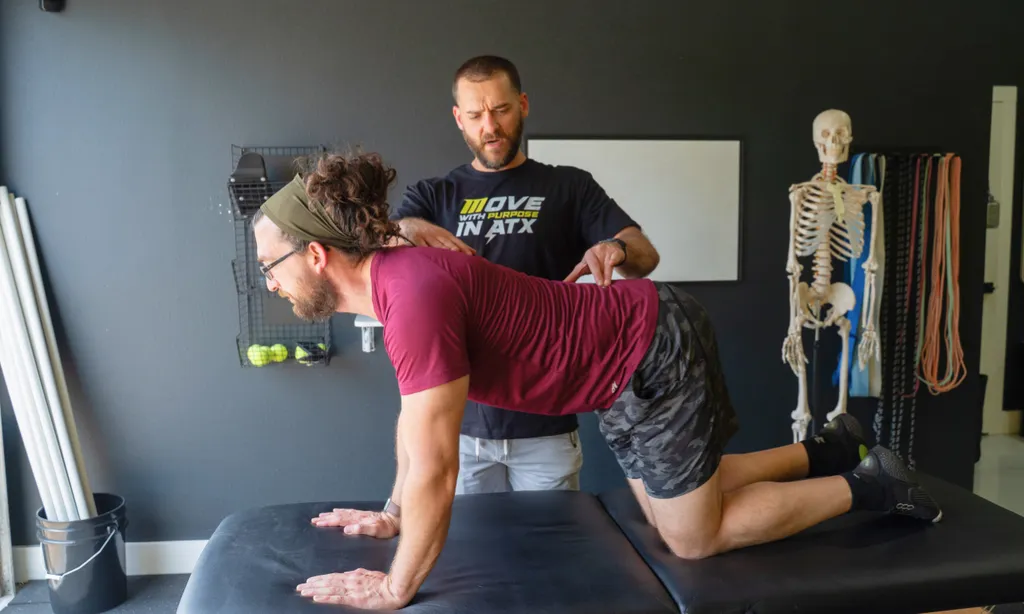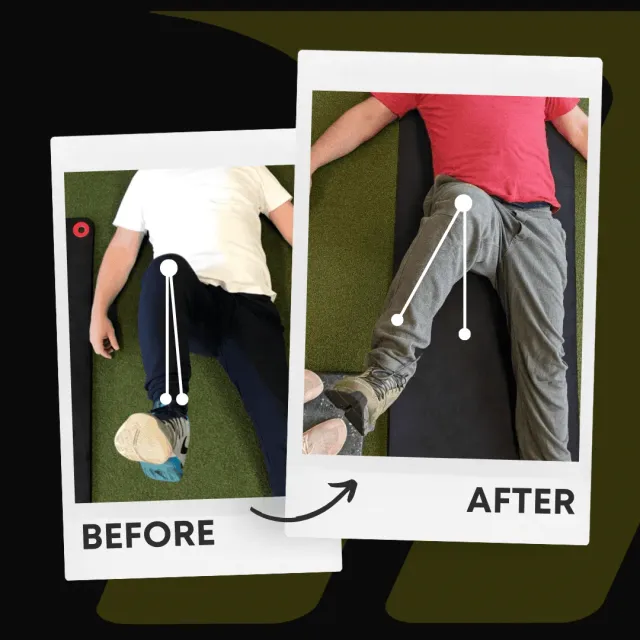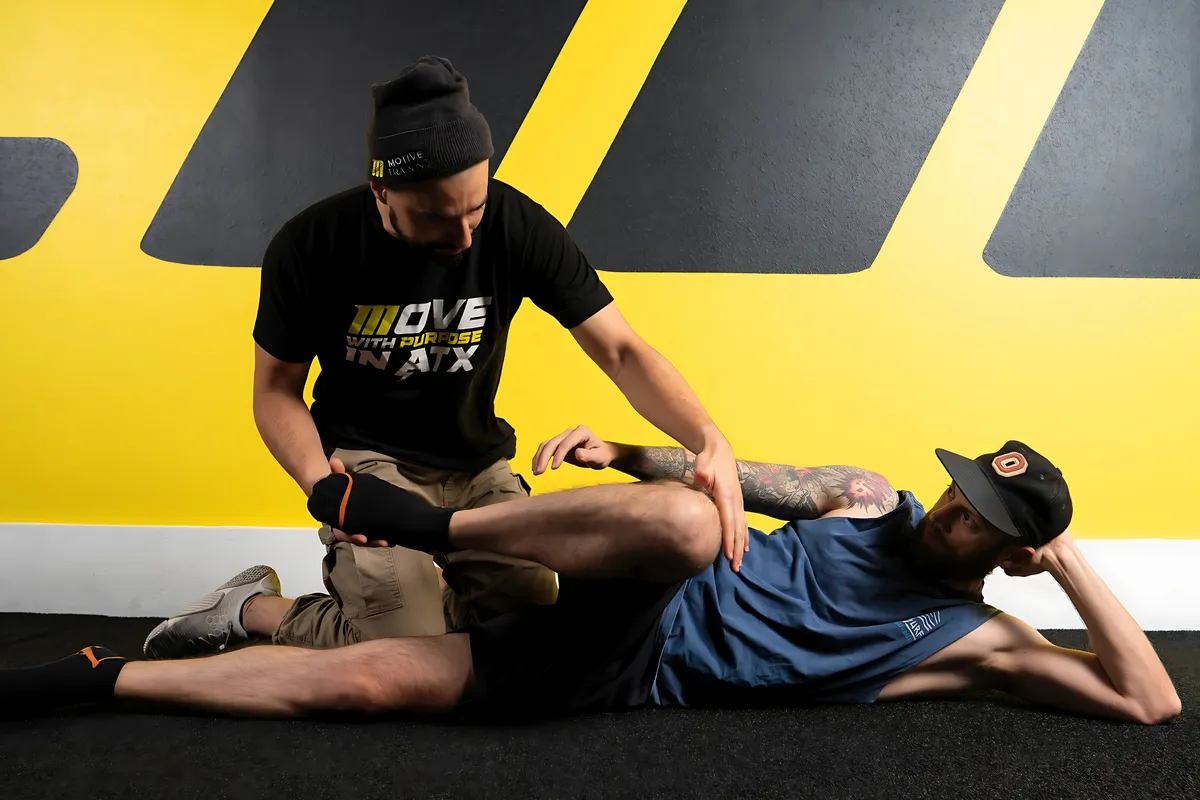How to Improve Posture in Austin, TX: Tips and Techniques
May 31, 2025 | Posture

Understanding Posture
What is Posture?
Posture is the position your body holds when standing, sitting, or moving. It’s not just about looking upright—it’s about how well your body aligns and supports itself against gravity. Good posture reflects balance and control. Poor posture, on the other hand, is often a result of lifestyle choices, repetitive habits, and limited mobility in key joints.
If you’ve ever felt your shoulders rounding forward after hours at a coffee shop on South Congress or noticed yourself slumping in traffic on Mopac, you’ve experienced how environment and daily patterns directly shape your posture.
Why Good Posture Matters
Posture affects nearly everything: how you move, how you breathe, your ability to generate force, and even how you experience pain. When the spine is supported properly, muscles and joints work efficiently. You reduce stress on your body, conserve energy, and move more freely.
At Motive Training, we teach that posture isn’t about rigid alignment. It’s about adaptability. A body that can move into and out of positions with strength and control is healthier than one stuck in a single “ideal” position.
Common Posture Problems
Forward Head Posture
This is one of the most common posture issues in Austin’s tech and remote-working community. When the head drifts forward—usually from endless screen time or phone scrolling—the cervical spine is strained. Muscles in the neck and shoulders tighten while others are overstretched. Over time, this can lead to headaches, shoulder stiffness, and even tingling sensations in the arms.
Rounded Shoulders
Another frequent issue is the collapse of the shoulders forward. It often results from excessive sitting, weakness in the upper back, and limited thoracic extension. Rounded shoulders alter the ribcage position, restrict breathing, and limit shoulder function. Correcting this requires both targeted mobility training and strength work that reinforces scapular stability and extension.
Anterior Pelvic Tilt
Less obvious but equally common, anterior pelvic tilt happens when the pelvis tips forward, exaggerating the lumbar curve. This pattern shows up in runners, cyclists, and anyone who spends too much time seated. Tight hip flexors and weak glutes are often culprits. Without addressing them, low-back pain and poor posture persist.
The Link Between Posture and Spine Health
Your spine isn’t a static column—it’s a living, dynamic structure designed to bear weight and allow movement. When posture is compromised, certain spinal segments take on too much strain, while others become stiff or immobile. The cervical spine (neck), thoracic spine (mid-back), and lumbar spine (low back) all play a role.
At Motive Training, we evaluate posture by assessing each segment of the spine and how it contributes to overall movement. Clients are often surprised to discover how much their spinal mechanics affect their breathing, core strength, and even athletic performance. Improving posture through spine health creates a ripple effect across every movement pattern.
Techniques to Improve Posture in Austin, TX
Ergonomic Adjustments
Your environment plays a major role in how your body holds itself. If you’re working from home in South Austin or sitting in a downtown office, evaluate your setup:
- Keep your screen at eye level.
- Choose a chair that supports a neutral pelvis.
- Rest your feet flat on the floor.
- If driving frequently, adjust your seat so your hips are level and your head doesn’t reach forward.
Small adjustments can prevent years of compensation. An ergonomic desk, for example, is an investment in long-term spinal health.
Training for Posture
At Motive Training, we don’t just “fix posture”—we train it. Posture is a skill built through mobility, strength, and awareness.
Daily practices include:
- Controlled Articular Rotations (CARs) to improve joint control.
- Breathwork with ribcage positioning to improve core stability.
- Rows, loaded carries, and split squats to reinforce alignment under tension.
- Glute and hip rotator training to balance the pelvis and lower back.
This approach develops not just static posture, but dynamic posture—the kind that holds up when lifting, running, or playing sports.
Professional Help for Posture
Chiropractic Care
Adjustments can temporarily reduce pain or restore motion, but they’re only one piece of the puzzle. Sustainable posture improvement requires active strength training. A good chiropractor should support—not replace—that process.
Physical Therapy
For injuries or post-surgical recovery, physical therapy provides a strong foundation. But once pain subsides, posture must be trained through progressive loading and mobility strategies. This is where transitioning into Functional Range Conditioning or structured mobility coaching in Austin delivers lasting results.
Making Good Posture a Daily Habit
Awareness Matters
Posture isn’t something you “set and forget.” Check in with yourself throughout the day. Are you collapsed into your laptop? Are your ribs flared? Are you clenching your jaw? Awareness is the first step to correction.
Daily Practices for Better Posture
- Move more often. Sitting isn’t the enemy—staying still is.
- Strength train consistently. Posture is a strength issue as much as it is a mobility one.
- Walk daily. Walking naturally reinforces upright alignment.
- Practice diaphragmatic breathing. Strong breath control improves core and spine support.
Clients often report that simple awareness paired with mobility and strength training dramatically changes how they look, feel, and perform.
Frequently Asked Questions
How long does it take to improve posture?
Most clients notice improvements within a few weeks, especially when combining mobility work with strength training. Consistency is key.
Can posture cause back or neck pain?
Yes. Poor posture creates uneven strain on the spine, often leading to discomfort in the neck, shoulders, or lower back. Correcting posture can reduce or eliminate these issues.
Do I need special equipment to improve posture?
No. Many posture exercises can be done with bodyweight or minimal equipment. Tools like resistance bands and light weights can help, but awareness and consistency matter most.
What’s the best exercise for posture?
There isn’t a single “best” exercise. A combination of joint mobility drills, core stability work, and strength training for the upper back and hips works best.
Can working with a trainer help fix posture?
Absolutely. At Motive Training, we assess posture and joint health during every session. Coaching ensures you’re doing the right exercises with the right intent.
Final Thoughts
Improving posture isn’t about chasing a perfect, static position. It’s about developing the strength, control, and adaptability to move without pain. In Austin, we see people undoing years of desk work, long commutes, and daily stress through mobility training and strength-based coaching. Posture isn’t about looking “straight”—it’s about building a body that can adapt to anything.
Written by
Brian Murray, FRA, FRSC
Founder of Motive Training
We’ll teach you how to move with purpose so you can lead a healthy, strong, and pain-free life. Our headquarters are in Austin, TX, but you can work with us online by signing up for KINSTRETCH Online or digging deep into one of our Motive Mobility Blueprints.

